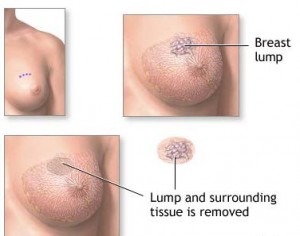
Decisions, Decisions, Decisions
-
While having too many options can be overwhelming at times, for a patient newly diagnosed with breast cancer, having a number of treatment options to choose from can be a good thing. Many women faced with breast cancer immediately assume that mastectomy may be the better option when compared with breast-conservation therapy (which includes lumpectomy) because it involves removing all of the breast tissue—increasing the odds of preventing secondary tumors later.
However, although difficult for some patients to understand, breast-conservation therapy and mastectomy have equal survival rates—a fact that has been confirmed through a number of clinical studies, involving tens of thousands of women, comparing the two techniques.
Unlike mastectomy, breast-conservation therapy doesn’t rely upon surgery alone.

When a breast surgeon talks about “breast-conserving surgery” they are talking about the surgery (lumpectomy) itself—again just the surgery. But when they talk about “breast-conservation therapy” they are referring to a combined treatment involving surgery as well as radiation to the whole breast. The combination of surgery and radiation is what makes breast-conservation therapy equivalent to mastectomy—without radiation, lumpectomy alone does not provide the same outcomes as more radical surgeries.
I hope that this post will help those newly diagnosed with breast cancer understand that having multiple options, like breast-conservation therapy and mastectomy, is a good thing. The more treatment options you have the more educated a decision you can make.
Richard J Bleicher, MD, FACS
Associate Professor in the Department of Surgical Oncology
Director of the Breast Fellowship Training Program at Fox Chase Cancer

